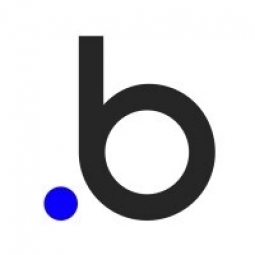Case Studies.
Add Case Study
Our Case Study database tracks 22,657 case studies in the global enterprise technology ecosystem.
Filters allow you to explore case studies quickly and efficiently.
Download Excel
Filters
-
(6,653)
- (2,601)
- (2,127)
- (945)
- View all
-
(5,642)
- (2,469)
- (1,692)
- (826)
- View all
-
(5,571)
- (2,178)
- (1,766)
- (643)
- View all
-
(5,247)
- (2,179)
- (1,715)
- (1,321)
- View all
-
(2,881)
- (1,448)
- (574)
- (376)
- View all
- View all 15 Technologies
- (1,985)
- (1,985)
- (1,915)
- (1,679)
- (1,629)
- View all 42 Industries
- (8,728)
- (4,742)
- (3,618)
- (3,233)
- (2,947)
- View all 13 Functional Areas
- (3,304)
- (2,787)
- (2,603)
- (2,006)
- (1,630)
- View all 129 Use Cases
- (13,581)
- (5,296)
- (4,272)
- (3,520)
- (2,856)
- View all 9 Services
- (504)
- (432)
- (416)
- (382)
- (301)
- View all 1083 Suppliers
Selected Filters

|
AFG Distribution's Growth in Multi-channel Ecommerce with Celigo
AFG Distribution, a rapidly growing wholesaler, faced significant challenges in modernizing their ECommerce order fulfillment and inventory updating processes. In 2015, they decided to move to a new ERP system and switch from Magento to the Shopify marketplace platform. They also planned to set up integrations with other marketplaces, which required an integration solution. The company had previously been using a legacy ERP system and when they moved to NetSuite, they selected Celigo as the integration solution to connect to marketplaces like Amazon, Walmart, eBay, Shopify, and their own business site. Prior to the switch, the team was burdened with numerous manual processes for inventory updating and other Ecommerce processes. They were spending between four to eight hours a day fixing website errors and reconciling inventory, which negatively impacted their customer service.
|
|
|

|
basecom Enhances Project Delivery and Customer Satisfaction with Celigo
basecom, a leading ecommerce agency in Germany, was facing challenges with its integration process. The company had built its own internal middleware solution, Octopus, in 2016 to streamline the process of building integrations for its clients. However, as the number of client projects increased, basecom found it difficult to keep up with the growing integration needs of its clients and maintain its own internal product. Octopus also had limited customizability, which caused delays during implementation. The company began looking for a modern integration platform as a service (iPaaS) in the market to address these issues.
|
|
|

|
CallOne, Inc. Streamlines Operations with Celigo Automation
Call One, Inc., a provider of business communication and collaboration technologies, was struggling with the manual management of their financials, including order fulfilment information and transactions. The company was using an older ERP system and had added SAP Ariba and NetSuite to improve workflows. However, they still needed a solution to connect these systems and enable automatic data interchange. The company was dealing with a high volume of orders from many clients, leading to extended work hours for employees. They also faced challenges in managing and updating product information for thousands of products on their website. This was a time-consuming process that required a significant amount of manual input.
|
|
|

|
CDC Foundation Boosts Transaction Management During COVID-19 with Celigo
The CDC Foundation, an independent nonprofit supporting the Centers for Disease Control and Prevention’s health protection work, faced a significant challenge when it migrated its operations to cloud-based solutions. The Foundation's processes and operations were unique and highly customized, making it difficult to determine what to connect, how to connect, and when to connect it. The business was burdened by manual processes, with staff dedicated to doing manual CSV uploads and reconciliation from system to system. As the sole member of the IT team, Malcolm James, Director Of Information Technology, needed a solution that was customizable, powerful, compatible with the CDC Foundation’s systems, yet simple to build and maintain as the organization grew.
|
|
|

|
Curran Streamlines Business Processes and Enhances Customer Experience with Celigo
Curran, a family-owned online luxury retailer, faced several operational challenges. Their highly customized website required a custom API to connect to their ERP system, Acumatica. With only one developer on staff, the manual integration tasks were time-consuming and detracted from further website development and customer experience enhancement. Additionally, Curran struggled with real-time inventory visibility. Their accountant had to maintain stock in two different databases, leading to data silos, inaccurate orders, and a poor customer experience. This often resulted in the need to provide order discounts, negatively impacting the company’s bottom line. Furthermore, due to their diverse selection of luxury furnishings, Curran had difficulty managing over fifty thousand unique SKUs associated with customized order placements.
|
|
|

|
E Source Boosts Invoicing Speed by 300% through Real-Time Data Synchronization
E Source, a research and consulting firm in the utilities sector, was facing a significant challenge due to its rapid growth. The company's sales volume had been increasing by double digits year over year, and its existing accounting software was unable to keep up with this growth. The software was experiencing frequent system breakdowns, which required hours of troubleshooting by the technical support team. Moreover, key data such as quotes, orders, customer, and product information had to be manually synced between the accounting and Salesforce systems. The company needed a new accounting system that could scale with its growth and eliminate the need for manual data synchronization. However, finding a reliable integration between the new system, NetSuite, and Salesforce that would not require changes to the existing sales process was a challenge.
|
|
|

|
Automating Cash Applications: A Case Study on Frontline Education
Frontline Education, a SaaS provider for K-12 educational institutions, was facing a significant challenge in managing their cash applications. The process was manually performed by uploading payee information sent from the bank into Excel spreadsheets, and matching them to NetSuite accounts in another spreadsheet. This process was not only time-consuming, requiring a staff accountant's time over multiple days, but was also prone to errors. The situation was further complicated by the company's business model. As a SaaS company serving education institutions, invoices are renewed annually to coincide with the beginning of the school year. With over 12,000 customers, Frontline’s finance team was dealing with a massive transaction volume in a small amount of time. The manual cash applications through Excel spreadsheets were not keeping up with the pace, and expanding the team was not a feasible solution.
|
|
|

|
GIFadvice: A Community-Driven Platform for Interactive Advice Guides
GIFadvice, a platform for building and sharing interactive advice guides, was founded by Ry Parken, who has a background in art, economics, graphic design, and marketing. The platform was designed to allow users to explain their decision-making process by adding GIF images to their advice guides. However, the platform faced a challenge in its initial stages. The process of creating and publishing a 'Getting Started' video was found to be too dull and boring. This posed a problem as it could potentially deter users from engaging with the platform. Furthermore, the platform was initially intended to be developed by hiring a developer, which could have led to increased costs and time consumption.
|
|
|

|
Leveraging IoT for Social Impact: A Case Study on goodgigs
The founder of goodgigs, Dale Wilkinson, identified a gap in the job market where mission-driven companies and professionals with a desire to create social impact struggled to connect. The challenge was the lack of a unified platform where job seekers could easily find companies working on causes they were passionate about. The traditional job portals were not efficient enough, requiring users to endlessly scroll through job listings. Furthermore, these platforms did not cater specifically to the social impact industry, making it difficult for professionals to find roles that matched their skills and vision. The challenge was to create a platform that would not only connect companies and professionals but also catalyze the social impact these companies could create by making it easy to find talent aligned with their mission.
|
|
|

|
Implement: A Learning Marketplace Leveraging IoT for Skill Development
Implement, a learning marketplace offering live online courses and affordable one-on-one coaching, was facing challenges in scaling its operations. The platform, which allows independent experts to provide video-based lessons over multiple days, was initially built on Wordpress using Woocommerce and Elementor. However, this setup was not scalable and was causing the loss of users due to the need to redirect them to external tools. The company was considering raising funds to hire a developer, as they did not have a tech founder on the team. The challenge was to find a solution that would allow them to build all the features they needed without having to rely on external tools or manual operations.
|
|
|

|
Kappa TrainUp: Revolutionizing At-Home Fitness Training with IoT
The fitness industry has been significantly impacted by the COVID-19 pandemic, with gyms and fitness centers being forced to close down. This situation created a challenge for fitness trainers who were left without a platform to offer their services, and for fitness enthusiasts who were left without access to their regular fitness routines. Brothers Nicolò and Sebastiano Ammendola, based in Italy, recognized this challenge and saw an opportunity to create a solution that would allow fitness trainers to continue offering their services and fitness enthusiasts to continue their fitness routines from the comfort of their homes. The challenge was to create a platform that would be easy to use for both trainers and users, and that would allow for live and recorded fitness sessions.
|
|
|

|
LTR Now: Revolutionizing Rental Experiences with IoT
The residential rental housing community has long been plagued by a lack of transparency, inclusivity, and accountability. Property managers often struggle with the process of sharing rental history verification, which is a crucial factor in securing housing for renters. On the other hand, renters often find it difficult to access their rental history data and confirm its accuracy. Furthermore, there was no efficient platform for renters to share their experiences with previous landlords, which could help other renters make informed decisions. Khanesia Hill Washington, an active licensed real estate agent and landlord, identified these challenges and saw a need to improve this process that significantly impacts a renter's quality of life and ability to secure housing.
|
|
|

|
Mindly: A No-Code Solution for Accessible Mental Health Resources
Mindly, an app that provides a curated directory of mental health resources, was founded by Rohan Taneja with the aim of making mental health support accessible to people of all ages, budgets, and needs. The challenge was to create an app that could effectively curate and present mental health resources based on user-specific criteria. The app also needed to ensure the quality of the resources by implementing a rating system. Furthermore, the app had to protect user privacy by keeping the entire process anonymous. Another challenge was to enable team collaboration in the app development process, especially considering that not all team members were experienced in coding.
|
|
|

|
Revolutionizing the Golfing World: The Mulligans Case Study
Nabil Cacheiro-Hamdi and Katie-Britt Greenway, the founders of Mulligans, were frustrated with the traditional model of buying and selling golf clubs. They found that golf shops offered very little value for used clubs while making significant profits on new models. The couple tried selling their clubs using social media but were disappointed with the process, which involved dealing with unreliable buyers and handling large amounts of cash. They also noticed that the only pricing guide available for golf clubs was created by golf shops, which often resulted in inflated prices that benefited the stores at the expense of the golfer. The founders wanted to create a solution that would save golfers money, make the process of buying and selling clubs easier, and keep the spirit of the sport alive.
|
|
|

|
NextbookIt: A P2P Book Selling Marketplace for College Students
NextbookIt, a peer-to-peer (P2P) book selling marketplace, was created with the aim of empowering college students to buy and sell books with their peers across the country. The platform was initially hand-coded, but the team faced numerous technical issues. The situation was further complicated when the programmer left the company, leaving CEO and Co-Founder Deric McCurry to seek a more efficient and scalable solution. McCurry, who did not have formal programming training, was initially hesitant about the limitations of no-code platforms, having had experience with WordPress.
|
|
|

|
One Pager Tool: A No-Code Solution for Raising Capital
The One Pager Tool was developed to address the challenges faced by entrepreneurs when raising capital. The process of raising capital is often complex and requires a clear, succinct story to attract potential investors. However, many entrepreneurs struggle with crafting a compelling narrative and tracking interested investors. Additionally, the founder, Tim Cooley, identified a need for affordable tools that could assist in this process. As an entrepreneur himself, he was aware of the high costs associated with developing such tools and sought a solution that would not require significant financial investment.
|
|
|

|
Partnerprograms: Bridging the Gap Between Agencies and Technology Providers
Partnerprograms was founded by Alex Glenn, a tech product marketing expert and curator of agency communities. The challenge was to create a platform that could bridge the gap between agencies and technology providers, referred to as 'partners'. The goal was to vet each program's ability and interest in working closely with potential partners, showcase how the solution supports agency services and MRR growth, and help agencies connect with and learn the services that each vetted program provides to clients. The platform needed to be user-friendly and accessible to any agency free of charge, with tech companies having the option to learn more by booking a time with Alex.
|
|
|

|
Pravvas: Revolutionizing Travel Itinerary Planning with IoT
Pravvas, a travel itinerary app, was founded by Sanup and Krishna Bhulawala, two product managers passionate about user experience. The challenge they faced was creating an app that not only allowed users to build a travel itinerary but also served as a personalized travel assistant. The app needed to provide features such as booking and viewing flights, finding activities, looking up places to eat, tracking trip expenses, auto-curating a packing list, checking the weather, and receiving travel and weather advisory alerts. The founders also wanted to ensure that the app was user-friendly and provided a seamless experience for travelers. Another challenge was finding a platform that offered the right balance of price, learning curve, and features to build their app.
|
|
|

|
PredictSheets: Leveraging Machine Learning for Business Predictive Analytics
Adam Roach, the founder of PredictSheets, identified a gap in the market where business owners who were not familiar with machine learning struggled to analyze complex data sets and predict outcomes. This challenge was limiting the potential of businesses to increase their value. Common issues that businesses faced included reducing customer churn, preventing employee attrition, and boosting sales-win rates. Additionally, Adam had previously experienced the high costs, time consumption, and stress associated with hiring developers to build a mobile app. He was looking for a more efficient and cost-effective solution to offer his expertise in a self-service manner.
|
|
|

|
Qinvoice: Streamlining Freelance Invoicing with IoT
Freelancers often struggle with keeping track of their time spent on each client and task. This can lead to inaccuracies in invoicing, missed payments, and overall inefficiency in their workflow. The challenge was to create a solution that would automate this process, ensuring that freelancers could accurately track their time and generate invoices without the need for manual input. The founder of Qinvoice, Bert Gybels, a digital strategist who develops marketing plans for brands in Belgium and abroad, sought to address this issue. He wanted to leverage the power of IoT to create a fully functional web app that would streamline this process for freelancers.
|
|
|

|
Automating Excel Skills Assessment: A Case Study on Rate My Excel
Rate My Excel, a platform developed by Lianna Gerrish, was designed to help companies quickly vet candidates' Excel skills through a fully automated testing platform. The challenge was to create a platform that could remotely test up to ten candidates at a time, provide instant scoring, and generate a custom score report comparing candidates and their work samples. The platform also needed to be user-friendly, allowing hiring managers to invite new candidates, review score reports, and change settings from a personalized dashboard. The challenge was not just to create a functional platform, but also to do so without having to write a line of code.
|
|
|

|
Sigful: Revolutionizing Email Signature Marketing with IoT
Sigful, an SMB and Enterprise email signature marketing and management software, was founded by Ross Walpole, a graphic/digital/web designer and developer with front-end coding skills but limited backend programming skills. The challenge was to create a software that could power email signatures and promo banners for businesses through a custom embedded signature generator. The software needed to be user-friendly, customizable, and integrated with other platforms. Furthermore, it was crucial for the software to offer a free trial for users to test its capabilities and create email signatures/banners.
|
|
|

|
Squads: A Social Fitness Discovery Platform Powered by Bubble
The Squads app was created to address the challenge of maintaining motivation for fitness and wellness activities. The founder, Phil Eligio, recognized that keeping fit and active can be difficult when attempted alone. The app was designed to connect people with shared interests and goals, thereby fostering a sense of community and mutual motivation. The challenge was not only to create a platform that could facilitate these connections, but also to empower professional fitness and wellness influencers to build and monetize their followings. The app needed to be user-friendly, engaging, and capable of integrating with third-party services to enhance its functionality.
|
|
|

|
Stump: Revolutionizing Voter Information Accessibility with IoT
Stump, a mobile application, was created to address the challenge of misinformation and political propaganda that often clouds the political landscape. The founders, Brian Hedden and Henry Lai, recognized that many voters lacked a comprehensive understanding of certain issues, which often led to uninformed voting decisions. The challenge was to create a platform that would provide unbiased information on politicians, ballot measures, and other pressing issues, thereby encouraging civic participation. The founders also wanted to create a platform that would benefit not only voters but also larger organizations and politicians by providing a year-round political action platform.
|
|
|

|
Digital Transformation of Banagher totalhealth Pharmacy with Bizimply
Banagher totalhealth Pharmacy, an independently owned pharmacy based in Banagher, faced significant challenges in managing its workforce. The owner, Joan Hennessy, struggled with scheduling, time tracking, and payroll management. The Time and Attendance data was often inconsistent, leading to manual filling of timesheets and high labour costs due to inaccuracies in overtime or holiday rate calculations. The scheduling process was also cumbersome, involving a combination of Excel spreadsheets and WhatsApp messages to organize, publish, and share the rotas. This often led to staff missing their shifts due to missed notifications or misreading the rota, leading to rising frustrations.
|
|
|

|
IoT Implementation in Retail: A Case Study of Bayley & Sage
Bayley & Sage, a retail company with 13 locations and over 200 employees, faced significant challenges in managing their operations. The previous solution they had implemented was not fit for purpose, creating more work than needed. They needed a system where they could have detailed customer support from the very beginning and an easy to use solution not only for employees but also management, payroll, HR and other departments. The main wants from the new solution were; support and training while rolling out, efficient and effective roll out and a complete overview of the entire business in one location. With 13 locations to manage, it was difficult to keep track of employees hours, payroll, time off requests, scheduling, labour costs, and good customer service. One of the main problems they encountered was managing staff across different locations. They had no way of accurately tracking the hours they had clocked in for and when they had clocked in onsite.
|
|
|

|
Centra's Transformation: Enhancing Retail Operations with IoT
Centra, Ireland's leading convenience retail group, faced significant operational challenges in managing its stores. The owner of Centra stores in Dublin, James Ryan, admitted that before implementing IoT solutions, all store operations were manually handled. Managers used Excel to create weekly rotas, which were then printed and pinned up in the store and shared in the work group chat. The absence of a formal system for time off and unavailability often led to last-minute adjustments to the schedule, finding staff to cover shifts when others were unavailable or had booked off. Furthermore, James and his managers lacked full awareness of labour costs across the stores, which negatively impacted store performance.
|
|
|

|
Transforming Restaurant Operations: A Case Study on Chew On This Group
Ellen Chew, a leading restaurateur in London, and her team at the Chew On This Group, faced significant operational challenges in managing their expanding collection of restaurants. They were previously using a software that failed to efficiently fulfill their operational duties or improve employee engagement and customer service. Consequently, they reverted to manual operations. Managers used Excel to create weekly rotas, and all employee time and attendance were tracked manually. Employees recorded their hours on a sheet of paper, which then had to be manually entered into payroll, consuming a significant amount of time. Often, employees would forget to record their hours, leading to further delays and communication issues to ascertain the correct hours. Manual calculations also led to error-prone payroll and a lot of frustrations.
|
|
|

|
BOS Automotive Enhances Cutting Line Performance with Lectra VectorAuto iX6
BOS Automotive, a supplier of interior components, was facing a challenge in keeping up with the changing requirements of an expanded product range and a thriving armrest business. The company's existing fabric-cutting equipment was not able to meet the increasing demands and the need for precision in the production process. The challenge was to find a solution that could not only increase the output but also improve the quality of the cut, thereby fulfilling the customer requirements.
|
|
|

|
Scaling Boldify's Online Business with Skubana
Boldify, a beauty and personal care brand, was facing challenges in scaling their online business. They were looking for a robust inventory and order solution that could seamlessly integrate with their existing Amazon and Shopify channels, and also accommodate future expansion into wholesale channels like Target. The co-founder, Mike Viskovich, had tried other platforms but was left unsatisfied due to their lack of quality customer support. He needed a platform that could not only integrate Amazon and Shopify quickly and easily but also provide quality customer support. Boldify's operations involved core products made in the US and boxes made in China, which were sent to FBA. This setup seemed to confuse other support teams, adding to the challenges faced by the company.
|
|




